|
Honi the Circle Drawer
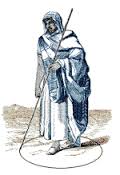
Aliases: Honi ha-M'aggel, Onias, Khoni, Choni
Location: Judea, Egypt
Cities: Jerusalem, Alexandria, Qumran?
Estimated Date: 0s B.C.
He fasts in the desert and controls the weather, just like Jesus
According to the Talmud, Honi the Circle Drawer, like Jesus, performed miracles in the tradition of Elijah and Elisha during the reign of King Alexander Jannaeus and Queen Salome Alexandra. He was called the Circle Drawer because he would draw a circle in the desert sand and then vow to fast in it until rain came. This parallels Jesus for fasting in the desert and the story of Jesus being able to control the weather to calm the storm, the only non-healing miracle ascribed to Jesus in the first three gospels.
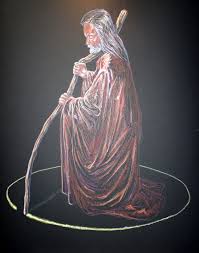
He is associated with the same person who killed Jesus in the Jewish anti-Gospel
One Talmudic story tells how after praying for rain, Jerusalem was flooded, after which the queen's brother and head of the Sanhedrin, Simon ben Shetah said to him: “If you had not been Honi, I would have excommunicated you! But what am I to do? You importune God and he does what you want, like a son who importunes his father and gets his way. Scripture says of you: Let your father and your mother be glad, and let her that bore you rejoice” (Prov. 23:23). Although the ending of this quote insinuates a very positive attitude towards Honi, it may be an attempt to cover up an earlier tradition that he threatened Honi with excommunication, which if true, would make him an opponent of both Honi and Yeshu.
He “fell asleep” under the same kind of tree that Jesus was hung on in the Jewish anti-Gospel
The Talmud also tells a Rip Van Wrinkle story about how Honi “fell asleep” under a carob tree for 70 years, similar to how Yeshu was hung on a carob tree in the Toledot, and then woke up and walks to a town where he hears the sages saying, “This tradition is as clear to us now as it was in the days of Honi the Circle Maker”, but when Honi tells them who he is, they don’t believe him. Since Honi was killed and hung on a tree some time around 70 B.C., 70 years would bring him to about the time the gospel Jesus was born. It is also the time the kingdom of Judea was transferred from the Hasmonean puppet dynasty directly to Roman control in 6 A.D., which would most likely have brought about a great amount of nostalgia for a return to a Jewish state led by a Jewish king.
He asks God to look past the sins of his killers, just like Jesus
In Antiquities of the Jews, Honi is referred to by the Greek form of his name, Onias, and is said to be a “righteous man” who “especially loved God.” It recounts how Onias had brought rain during a drought and adds that he hid himself during the civil war that erupted between Pharisees and Sadducees, each led by one of Queen Salome’s sons, Hyrcanus II and Aristobulus II. When Aristobulus besieged Hyrcanus inside Jeruslem, Onias was captured and brought to Hyrcanus, where he was ordered to curse Aristobulus’ army. Onias instead spoke to the crowd saying, “Oh God, King of the universe, since these men standing beside me are your people, and those who are besieged are your priests, I ask you not to pay any attention to them against these men, nor to bring to pass what these men ask you to do against those others”, a sentiment very similar to a quote from Jesus before his death, “Father, forgive them, for they know now what they do.” (Luke 23:34). This caused Onias to be stoned to death.
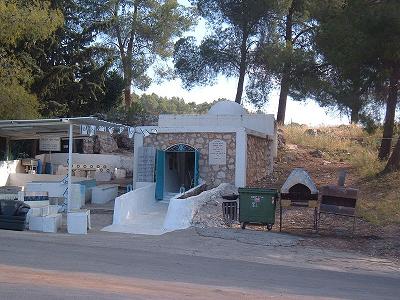
The Tomb of Honi the Circle Drawer in Galilee
His Passover death was believed to have caused the fall of Jerusalem to Pompey just as the Passover death of Jesus was believed to have caused the fall of Jerusalem to Titus
According to Josephus, Onias the Circle Drawer was stoned to death on Passover while the city was under siege by Aristobulus II, the brother of the high pirest, Hyrcanus III. Josephus said that his execution caused a famine. Since the beseiged were not able to host a Passover sacirifice, they tried to purchase it from his enemy Aristobulus II, but the sacrifice was not delivered by the beseiging Sadducees, leading to another famine sent by God. Pompey then made a deal with Aristobulus, but after a rebellion that Aristobulus failed to control, Pompey conquered Jerusalem, looted the temple, and gave control of it to Hyrcanus II. Given these circumstances, Honi the Circle Drawer must be the murdered “wise king” that Mara Bar Serapion said caused the fall of the Jewish kingdom. Jesus is likewise described in the gospels as predicting the fall of Jerusalem and the destruction of the Temple by Titus, with the sacred veil of the Temple being ripped by God as soon as Jesus is executed.
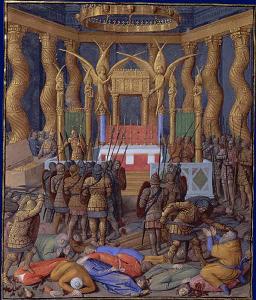
“Pompey in the Temple of Jerusalem,” by 15th century French painter Jean Fouquet
His story includes ears being cut off, a theme found in the gospels
Although Hyrcanus, the high priest who executed Honi, won out over his brother, he eventually put too much trust in Herod’s father, a general named Antipater the Idumaean, and lost his kingdom to Antipater and the Romans. In 40 B.C., Aristobulus’ son cut the ears off Hyrcanus so as to make him ineligible for the office of high priest. This is paralleled by the gospel story of one of Jesus’ disciples cutting off the ear of the servant to the high priest, and also seems to have an ironic reference in the often-repeated phrase given by Jesus, “Let those who have ears hear.”
His ancestor Honi III was executed while hiding out in a garden sanctuary similar to Jesus in the garden sanctuary of Gethsemene
In 219 B.C., Antiochus III “the Great” of the Seleucid dynasty in Syria seized Palestine from the Ptolemy dynasty, creating a power struggle between the two Hellenistic kingdoms with Jerusalem in the middle. According to the Book of Ezekiel, the Jerusalem Temple was meant to be held by a priestly clan known as the Zadokites, and this inheritance was eventually handed down to a traditionalist named Honi III. According to Josephus and 2 Maccabees, his pro-Hellenization brother, Yehoshua (called Jason), managed to bribe the Syrian king in 175 B.C. to take over as high priest in return for the treasure stored in the Temple, but was eventually outbid by a non-Zadokite named Menelaus. Josephus says that Honi III, or “Onias III”, escaped to “the inviolable sanctuary of Daphne, near Antioch,” a sanctuary of Apollo, but was lured out by Menelaus and a nobleman named Andonicus with sworn pledges of nonviolence only to be executed. Josephus says “As a result, not only the Jews, but many people of other nations as well, were indignant and angry over the unjust murder of the man.”
His ancestor Honi III was described as a martyred Messiah whose death would foreshadow the End Times
The Book of Daniel, which uses the same theme of the four beasts that the Book of Ezekiel, and adapted again later in the Book of Revelation, describes the death of Honi III as the death of the Messiah that would inagurate the End Times. As shown by Who Wrote the Gospels?, by Dr. Randel McCraw Helms, the Book of Daniel identifies “the Anointed One,” or Messiah, as Onias III in its prophecy of the Apocalypose. The book of Daniel interprets the seventy years that Jerusalem was to remain desolate from the Book of Jeremiah to be 70 ‘weeks’ of years, meaning Jerusalem would be under a foreign power for 490 years, divided into a seven-week period, a 62-week period, and a final one-week period.. Daniel says there will be seven ‘weeks’, representing 49 years, between the destruction of Solomon’s Temple in 587 B.C. to the building of the second in 538 B.C. Then 62 ‘weeks’, representing 434 years, from the decree to rebuild Jerusalem in 605 B.C. until the Messiah, Onias III, was assassinated in 171 B.C. Another ‘half-week’, representing the 4 years between his death and Antiochus putting an end to sacrifices and offerings in 167 B.C., when he set up a the “abomination that causes desolation”, a reference to the sacrifice of pigs upon an altar of Zeus set up in the Jerusalem Temple by Antiochus. The last ‘week’ represented the seven years between the death of Onias III and the rededication by Judas Maccabee in 164 B.C.
So you are to know and discern that from the issuing of a decree to restore and rebuild Jerusalem until Messiah the Prince there will be seven weeks and sixty-two weeks; it will be built again, with plaza and moat, even in times of distress. Then after the sixty-two weeks the Messiah will be cut off and have nothing, and the people of the prince who is to come will destroy the city and the sanctuary. And its end will come with a flood; even to the end there will be war; desolations are determined.
His ancestor Honi IV fled to Egypt, just like Jesus
According to Josephus, When Menelaus took power over the Temple in Jerusalem, Honi IV fled to Egypt and eventually built a smaller replica of the Jerusalem Temple in the Egpytian city of Leontopolis, the “Lion City” named so because of the many temples dedicated to the Lioness Goddess Bast, the feminine form of the lion god Bes, whose image is identical to a drawing of Yahweh from the 700s B.C. Honi's escape may have been the origin of the “escape to Egypt” story in the Gospel of Matthew. The Talmud refers to two different Yeshu's that escaped to Egypt, one during the reign of Hyrcanus in the second century B.C. and one during the reign of Alexander Jannaeus in the first century B.C. The Toledot attributes the second escape to Egpypt to a transfer of power from the Pharisees to the Saduccees, causing Yehoshua ben Perachiah and Yeshu to escape to avoid persecution but then returning after which Alexander dies and power is restored to Simon ben Shetah and the Pharisees.
His dynasty may be the alternate priesthood favored by the Essenes
The Dead Sea Scrolls, discovered in caves near Qumran in the 1940s and dated between 160 B.C. and 70 A.D., describe an Essene sect which revolved around of nameless leader (or leaders) dubbed “the Teacher of Righteousness”, with one damaged scroll making reference to King Jannaeus as the “furious young lion”, although there is disagreement over whether it is meant as a positive or negative. The title “Teacher of Righteousness”, Moreh ha-Tzedek, parallels the epithet given to the James the “Just” or “Righteous”, Yahcov ha Zaddik, who is generally identified with the brother of Jesus. Like Christ, it was believed that the Teacher of Righteousness inaugurated a “New Covenant” with his followers and knew how the world would end at the Apocalypse. He was also connected to an obscure king in the Book of Genesis, Melchizedek, which parallels Jesus being identified as the high priest of the Order of Melchizedek in the Epistle to the Hebrews. Like Christianity, the Qumran sect was in contention with the prevailing Jerusalem priesthood and its apocalypticism was heavily dependent on the Books of Enoch, which describes how evil came about from the fallen angels Samael and Azazel, the closest parallel to the Christian concept of Satan and his angels falling from heaven, as described in the Book of Revelation. Fragment 7 of the heavily damaged scroll, 4Q285, also called the “Slain Messiah Text”, makes mention of several key Christian phrases, saying: “Isaiah the Prophet... the scepter shall go forth from the root of Jesse [father of David]... branch of David and they shall be judges... and they put to death the leader of the community, the branch... with piercing and the priest shall command... the slain of the Romans...” The Essene community has also been shown to have a strong link with Antioch, the city Acts identifies as the place where people first began calling themselves Christians and the city that the Epistle to the Galatians places the church of Cephas (Peter).
The “Star of Bethlehem” myth from the Gospel of Matthew originated from his time period
Damascus was conquered by Tigranes II in 72 B.C., and in 69 Cleopatra Selene was arrested and killed at the age of 66, effectively ending 250 years of Seleucid rule. Tigranes II was the first to mint Armenian coins, and the coins he produced after adopting the Seleucid practice show him wearing a crown showing a star with a curved tail on it. Some have argued that the Star of Bethlehem is a reference to Halley’s Comet, which should have been visible in the sky on August 6, 87 B.C. Alexander Jannaeus also minted widow’s mite coins with stars and anchors on them. Some theologians have suggested that the comet’s return in 12 B.C. may help explain the story of the Star of Bethlehem, although the date is too early for both the Gospel of Matthew and the Gospel of Luke. Tigranes may have seen Halley’s comet as heralding a new era of Armenian supremacy, as he took on the later Christian title of “King of Kings”. The Roman politician Cicero spoke of his success in war as making “the Republic of Rome tremble before the prowess of his arms”, which could explain how the concept of a special star inaugurating the warrior Messiah who would one day defeat the Romans. The concept of the “Star Prophecy” would again be used during the next two Jewish-Roman wars as well.
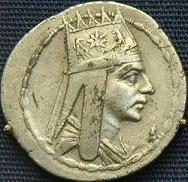
Coin of Tigranes wearing a crown with a star
His death at the hands of fellow Jews matches an early tradition of Jesus being killed without Roman assistance
Both Delbert Burkett have and John Domonic Crossan have shown that parts of the Passion narrative relies on an early tradition of Jesus being executed solely by Jewish authorities, though neither Burkett nor Crossan considers the traditions to be historic. Burkett identifies similar language used for Jesus in the Gospel of Luke and Stephen in Acts of the Apostles as a hypothetical “Sanhedrin Trial Source” where a martyr is tried and executed by Jewish law. Burkett quotes a reference to Yeshu being hung in the Babylonian Talmud but only offers it as a possible connection to the source and is unsure as to whether the “Sanhedrin Trial Source” began as a legend about Jesus or Stephen. The way Acts 7-8 built up the otherwise unknown Stephen, especially compared to how ungracefully James is killed off with barely an explanation later, has always been been very conspicuous. Stephen’s long speech on the history of Israel is one that would normally be placed in the mouth of someone in much higher authority. Josephus likewise tells how a servant of Caesar named Stephen was robbed and when the soldier who tracked the thieves down found a Hebrew Bible and burned it, it caused a great uproar in the region similar to the uproar described by Acts after the death of Stephen. The German-Jewish historian of religion Hans-Joachim Schoeps and the Jewish scholar Robert Eisenman have hypothesized that the story was originally meant for James the Just but that the author of Acts changed it in order to help distance the brother of Jesus and the Jerusalem church from Hellenistic Christainity. However, given the story’s relationship to the Passion, and the more direct link with the stoning of Yeshu, it would also make sense for the editor of Luke-Acts to rewrite a story about Yeshu being stoned into the story of Stephen’s martyrdom. Eisenman also believes that Honi the Circle Drawer belonged to the same Tzaddik, or “Righteous” tradition, along with Phineas, Elijah, and James the Just/Righteous. Crossan finds additional pre-canoincal elements from the hypothetical “Cross Gospel” that happens to match up with elements in the Toledot: “Although it defies historical plausibility, it is “the people” who crucify Jesus and not the soldiers. One should imagine “the people” stoning Jesus to death, but it took soldiers to execute by crucifxion.” This “historical implausibility” makes more sense if the author of the Cross Gospel was trying to link the crucifixion of the gospel Jesus with the first century B.C. stoning death of Yeshu. Crossan’s determination of an earlier tradition of Jesus being buried by his enemies rather than his friends is also present in the Toledot. Crossan also comes to the conclusion that the original Cross Gospel used only the word presbyteros, or “elders,” to reference the Jewish authorities and that as time progressed, other labels like “chief priests”, “scribes”, and “Pharisees” were added into the gospels (including the Gospel of Peter) through “redactional word integration”. Crossan explains that he came to the conclusion that “elders” was the original term because it is the only term used in every group, which matches the The Toledot in using only the terms “wise men” and “elders.” Finally, Crossan points out that the reed used to hit Jesus with in Mark 15.19 was part of a combined tradition of royal mockery and scapegoat abuse also present in the Gospel of Barnabas and the Sibylline Oracles. In the earlier tradition present in the Cross Gospel, a hypothetical reconstruction of a source used in the Gospel of Peter, the reed was instead used to nudge, but Mark changed its role in his gospel to have the elders beating Jesus with it, while the Gospel of Matthew used it as a false scepter. The earlier version of the Toledot, the Jewish Life of Jesus, instead has Yeshu struck with a pomegranate staff, which as Frank Zindler points out, appears to be the more authentic than the tradition from Mark. Since the staff is a more common household item, it would stand to reason that it was the original weapon in the royal mockery tradition before it became conflated with the scapegoat abuse tradition.
First Figure: Dumuzi
The Dying-and-Rising Gods
Leave Comments Here
|

